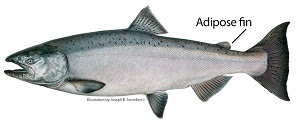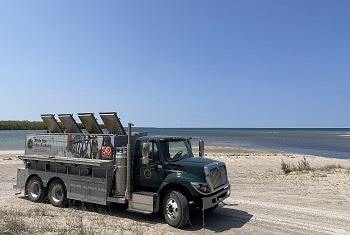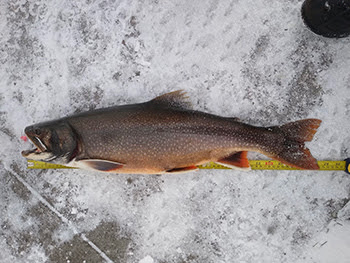Reel in a marked or tagged fish- let Michigan DNR know

If you fish the Great Lakes and catch a marked and tagged fish, the DNR wants to know. Since the 1980s, the DNR has used the coded-wire tag program to mass mark various trout and salmon species in Michigan. Mass marking provides critical data as fisheries biologists assess the value of naturally reproduced versus stocked fish, as well as lakewide fish movement.
The program involves implanting a small, coded-wire tag, which is invisible to the naked eye, into the snout of a fish. A fish with a coded-wire tag can be identified because its adipose fin (the small, fleshy fin between the dorsal and tail fins) has been removed.
Anglers who catch these tagged fish can then record needed information (like where and when the fish was caught, details from the tag, and the species, length and weight of the fish), remove and freeze the fish’s snout and drop it off at designated locations. A statewide list of drop-off locations is available on the DNR website.
The DNR, in conjunction with the U.S. Fish and Wildlife Service and other state agencies, places coded-wire tags in the snout and removes the adipose fin from lake trout, rainbow trout (steelhead) and chinook and Atlantic salmon stocked in lakes Huron and Michigan.
Learn more about the DNR’s mass marking efforts at Michigan.gov/TaggedFish.







